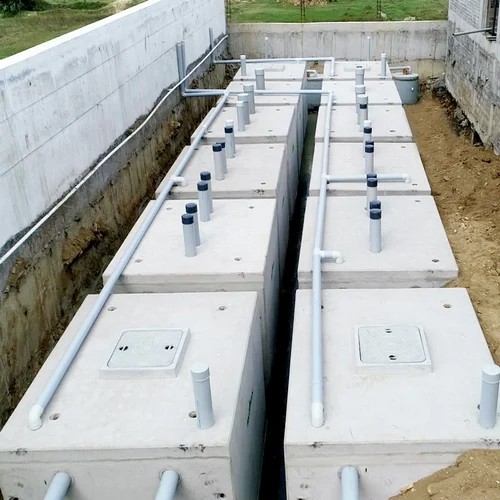Treatment of wastewater isn’t a choice—it’s a necessity to clean and safer home with good sanitation. Traditional sewage systems have been the standard method for wastewater management across residential, commercial, and industrial sectors for decades. Unfortunately, they failed to meet some essential factors like performance, efficient energy resource, cost-effectiveness, and environmental friendliness.
This is where the Bio Sewage Treatment Plant (Bio STP) takes center stage. With natural processes and environmentally friendly techniques, it has emerged as a more intelligent option compared to traditional systems. As a homeowner, business owner, or community planner, knowing what this innovative system can offer makes it easier for you to make a well-informed decision.
Seven smart reasons why a Bio Sewage Treatment Plant is a better option than traditional systems are listed below.
1. Eco-Friendly Sewage Treatment
Conventional sewage systems tend to rely more on chemicals and energy-based equipment to pump in the treatment of wastewater. But a Bio STP treats wastewater by decomposing solid waste and mud at the bottom with the help of naturally active bacteria. It visibly encourages eco-friendly process by avoiding harmful chemical introduction into tank.
Through reduced discharge of chemicals into the environment, it contributes to protecting soil pollution, groundwater contamination. A bio STP avoids that issue, keeping your environment clean and secure.
2. Reduced Energy Consumption
The main flaw with traditional sewage systems is power consumption during cleaning with blowers, pumps, and aerators that burn a lot of electricity and make you spend more on electricity bills. Bio STPs, particularly non-electric ones, are made to operate with little or even no power. They rely on natural gravity flow and natural microbial action to treat sewage with anaerobic bacteria, which makes them extremely energy-efficient.
3. Cost Savings in the Long Run
Although the initial investment in a bio sewage treatment plant can be equal to conventional systems, the long-term cost savings are immense. With the traditional treatment plant, it costs more on regular desludging, pumping, and maintenance every now and then.
Bio STPs have few moving parts and consume less energy, which means their maintenance costs are cheaper.
It’s a perfect one-stopsolution that will save your money without causing issues often to inspect and maintain every year. It’s like purchasing an energy-efficient appliance with more features—you spend a little more initially but save money in the long run.
4. Reusable Treated Water
Conventional sewage plants tend to release treated water without venturing into reuse possibilities. The main motive of having a bio sewage treatment plant is to generate clean, pure reusable water. A good sewage treatment plants provide treated water that is:
- Free from bad odors and clear water
- Low in infectious bacterial, viral or fungal germs
- Ideal for flushing toilets, irrigation, landscaping, gardening and house cleaning
The perfect ideal systems for sewage treatment needs to have an additional tertiary treatment process (such as UV filtration or chlorination) for extra water purification, making it perfect for various reusages.
5. Low Maintenance, High Reliability
One of the biggest disadvantages of conventional systems is that they have to be regularly monitored, desluded, and subjected to repair work. Failure tends to result in obnoxious odors, sludge overflows, and system downtime.
By contrast, Bio STP Plant need little maintenance. The periodic removal of sludge and simple checks are generally sufficient to ensure that the system continues to function smoothly. Their simplicity and rugged design guarantee long-term performance and reliability.
6. Compliance with Environmental Standards
In this modern era, guidelines to protect environmental standards for wastewater management are becoming strict globally to avoid water contamination and environmental pollution. Conventional systems normally find it difficult to achieve these standards through other treatment.
The most efficient bio sewage plants are also built to comply with or surpass the local and global standards, providing:
- No toxic discharge into natural water reservoirs
- No groundwater contamination
- Reliable treatment efficiency even with load fluctuations
Having a compliant system in place is equivalent to having peace of mind as well as legal protection.
7. Increases Property and Community Value
Installing a bio sewage treatment plant is not merely about wastewater management—it’s about creating long-term value. Here’s something many people forget to think: installing a bio septic tank in your own house or building can actually increase your property value and resale value. Future buyers will love the idea of a home or building with best sanitation that’s eco-friendly, safe for the environment, low-maintenance, tension-free, and future-ready.
Final Thoughts
The Bio Sewage Treatment Plant is a contemporary, environmentally friendly, and cost-saving solution over conventional systems. The bio sewage treatment process, lower energy use, future savings, potential for water reuse, low maintenance requirement, regulatory compliance, and value-adding factors make it clear that why everyone’s switching to it.
By switching to a Bio STP plant, you’re not just upgrading your waste management — you’re also protecting environment for future generation by giving a cleaner, safer, and more sustainable home.

